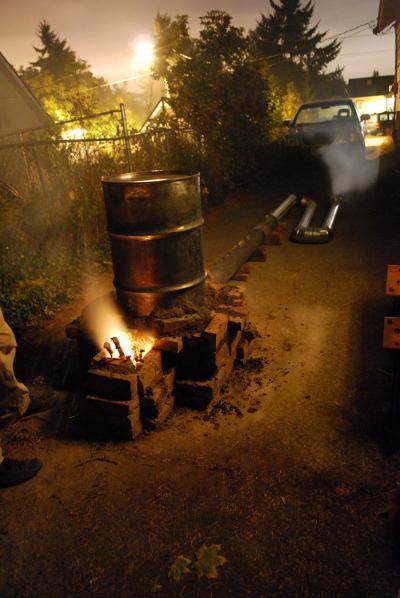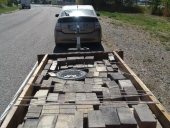
























Adam Stjohn wrote:First of all, the exhaust is mostly steam: low-clay, pacific-northwest mud was used as temporary mortar, and during the burn, all that mud produced a lot of steam. Eventually there were puddles beneath each seam in the exhaust pipe.
Adam Stjohn wrote:Secondly, question: there is was a lot of smoke-back. I tried removing sections of the exhaust pipe, but that didn't change anything (so I don't think it had to do with air-resistance in the exhaust). I'm wondering if it had to do with two things: 1) the heat riser is brick. The mock-up used mud as temporary mortar, so cracks in the brick were sealed; However, the heat-riser was not insulated. The final design will be insulated with clay and perlite. Could this explain the smoke-back? 2) Could there be a bottleneck at the exit flue? (Where the air moves from the barrel, to the exhaust pipes?)
regards, Peter




1# Too much water in the stove and/or the fuel.
2# Too narrow manifold where the bench pipe start.
And I do not look forward to re-working this-- But it best be done.The drop-down at the exit won't help at all. In fact, it will make matters worse when it'll step down too steep, there will be a low pressure void which will apply a drag force to the gas stream. It's best to make this manifold about 1.5 or 2 times as large as the system size.
3# No insulation around the riser and tunnel.
4# Too long horizontal exhaust.
5# Too short vertical stack, or none at all.
6# No cob around and on top of the horizontal exhaust pipe.




Adam Stjohn wrote:Now I realize why this would cause smoke-back: when water evaporates, it expands a lot; this would cause more pressure throughout the system and screw up the draft?
Adam Stjohn wrote:I'll try to get the heat riser closer to the barrel. But yeah, not too worried about it.
regards, Peter




For even heating from all sides of the barrell, we need to encourage the hot gases to swirl down equally around the barrel, not just short-cut to the exit tube.

|
Patriotism is the virtue of the vicious - Oscar Wilde
2024 Permaculture Adventure Bundle
https://permies.com/w/bundle
|


